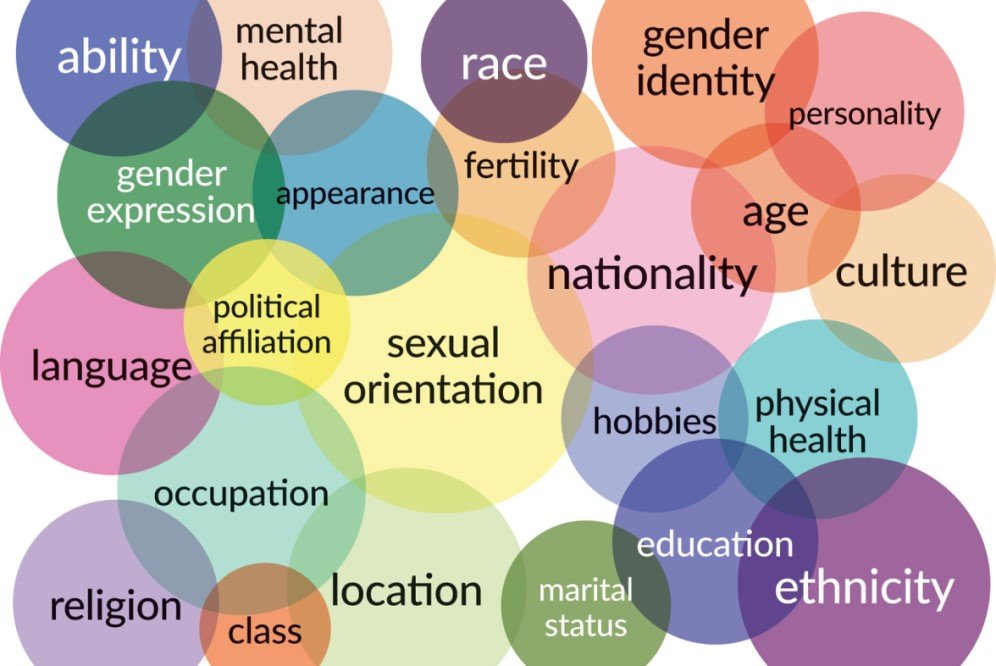Alice Walker’s groundbreaking novel, The Color Purple, and the subsequent movie adaptation have moved and educated audiences worldwide about the importance of cultural competence and racial healing. Through the powerful narratives of African-American women facing adversity, the story teaches valuable lessons that can inspire individuals and communities to foster understanding, compassion, and social change.
In this blog article, we will explore the key lessons from The Color Purple that contribute to enhancing cultural competence and promoting racial healing.
Lesson 1: Embracing Intersectionality
The Color Purple introduces readers and viewers to a diverse range of characters, highlighting the complexity and intersectionality of their identities.
By addressing issues of race, gender, sexuality, and class, the narrative emphasizes the importance of recognizing and appreciating the multiple layers that make up a person’s identity.
This lesson encourages individuals to move beyond one-dimensional perspectives and develop a deeper understanding of the experiences and challenges faced by people from different cultural backgrounds.


Lesson 2: Challenging Stereotypes
Walker’s work challenges damaging stereotypes prevalent in society, particularly regarding African-American women. The characters in The Color Purple defy these stereotypes by demonstrating their resilience, strength, and capacity for growth.
By doing so, the story challenges readers and viewers to question preconceived notions and biases, promoting a more accurate and nuanced understanding of cultural diversity. This lesson serves as a reminder that cultural competence involves actively unlearning stereotypes and embracing the complexity of individuals’ lived experiences.
Lesson 3: Empathy and Compassion
The Color Purple teaches us the transformative power of empathy and compassion. The characters in the novel and film face significant hardships, yet their ability to extend forgiveness and understanding to one another fosters healing and personal growth.
Through the story, we learn that cultural competence requires acknowledging the pain and struggles of others while actively working towards creating a more inclusive and equitable society. By empathizing with the experiences of marginalized groups, we can build bridges of understanding and promote racial healing.


Lesson 4: Importance of Education and Awareness
In The Color Purple, education is depicted as a tool for empowerment and self-discovery. The characters’ journeys towards education and self-awareness highlight the transformative impact of knowledge on personal growth and cultural competence.
This lesson emphasizes the need for individuals and communities to actively seek out diverse perspectives, engage in critical dialogue, and educate themselves about the historical and contemporary realities of marginalized communities. By doing so, we can challenge systemic racism and work towards racial healing.
Lesson 5: Collaboration and Solidarity
The Color Purple emphasizes the importance of collaboration and solidarity in the pursuit of racial healing and cultural competence. Throughout the story, characters come together to support and uplift one another, forming a sense of community and shared purpose.
By working together and recognizing the value of collective action, individuals can create meaningful change. This lesson reminds us that racial healing is not the responsibility of one group or individual alone, but rather a collective effort that requires collaboration, allyship, and the amplification of marginalized voices.

Lesson 6: Acknowledgment of Historical Injustices
The Color Purple confronts the legacy of historical injustices faced by African-Americans, particularly the experiences of slavery and systemic racism. By acknowledging and addressing the painful history of racial oppression, the story encourages individuals to confront and dismantle the structures that perpetuate inequality and prejudice.
Cultural competence requires an understanding of historical context and a commitment to rectifying past wrongs. This lesson teaches us the importance of acknowledging the impact of historical injustices and working towards a more inclusive and equitable future.
Lesson 7: Intersectionality and Multiple Identities
The Color Purple highlights the importance of recognizing and understanding the intersecting identities that individuals possess. The characters in the story face various forms of oppression and discrimination, including racism, sexism, and homophobia.
By acknowledging the complexity of identity and the interconnectedness of different forms of marginalization, we can develop a more nuanced understanding of the experiences and struggles faced by individuals from diverse backgrounds.
Cultural competence requires recognizing and valuing the multiple identities that individuals hold, and working towards dismantling the systems that perpetuate discrimination based on these identities.


Lesson 8: Challenging Gender Norms
The Color Purple challenges traditional gender norms and explores the impact of patriarchy on women’s lives. The story highlights the importance of empowering women and creating spaces for their voices to be heard.
By questioning societal expectations and challenging oppressive gender roles, we can foster a more inclusive and equitable society. Cultivating cultural competence involves recognizing and respecting diverse gender identities and experiences, and actively working towards gender equality.
Lesson 9: Healing and Transformation
The Color Purple demonstrates the power of healing and transformation, both on an individual and communal level. The characters in the story undergo personal growth and overcome trauma through acts of self-reflection, forgiveness, and love.
This lesson reminds us that healing is possible, and that it is essential for fostering racial healing and cultural competence. By providing support, empathy, and opportunities for healing, we can create a space for individuals to reclaim their identities and contribute to the collective journey towards understanding and reconciliation.


Lesson 10: Amplifying Marginalized Voices
The Color Purple emphasizes the importance of amplifying marginalized voices and centering their experiences. The story gives voice to the experiences of African-American women, who are often overlooked or silenced in mainstream narratives.
Cultural competence requires actively seeking out and listening to the stories and perspectives of marginalized communities, and using our platforms and privilege to uplift their voices. By embracing diverse perspectives and narratives, we can create a more inclusive and just society.
Lesson 11: Persistence and Resilience
One of the underlying themes in The Color Purple is the importance of persistence and resilience in the face of adversity. The characters in the story face numerous obstacles and challenges, but they never give up.
They find the strength to keep going, to keep fighting for their rights, and to keep striving for a better future. This lesson reminds us of the power of perseverance and the importance of not giving up, even when faced with seemingly insurmountable obstacles.
Cultivating cultural competence requires a commitment to continue learning, growing, and advocating for justice, even in the face of setbacks and difficulties. By remaining persistent and resilient, we can contribute to the ongoing work of racial healing and cultural competence.


Lesson 12: Determination and Empowerment
The Color Purple teaches us the importance of determination and empowerment in the pursuit of social justice and cultural competence. The characters in the story demonstrate unwavering determination to challenge oppressive systems and fight for their rights.
They refuse to be silenced or defeated, and they empower themselves and others through acts of resistance and self-expression. This lesson reminds us that change is possible when we are determined and empowered to take action.
Cultivating cultural competence requires a commitment to empower ourselves and others, to stand up against injustice, and to work towards creating a more equitable and inclusive society.
By staying determined and empowering ourselves and others, we can make a meaningful impact in the journey towards racial healing and cultural competence.
FAQs About Color Purple
A: The Color Purple showcases characters who face numerous obstacles and challenges but refuse to give up. They find the strength to persevere and fight for their rights, demonstrating the power of persistence and resilience in the face of adversity.
A: We can apply the lesson of not giving up by remaining determined and resilient in the face of challenges. Instead of letting setbacks discourage us, we can learn from them, adapt our strategies, and keep pushing forward towards our goals.
A: Determination is crucial in the pursuit of social justice and cultural competence. It drives us to challenge oppressive systems, advocate for marginalized communities, and work towards creating a more equitable and inclusive society. By staying determined, we can make a meaningful impact in promoting justice and understanding.
A: Empowerment is essential in cultural competence as it enables individuals to embrace their identities, voices, and experiences. By empowering ourselves and others, we create an environment that values diversity, fosters inclusivity, and encourages open dialogue, ultimately contributing to cultural competence and understanding.
A: The Color Purple teaches us that staying determined and empowered is essential in challenging injustice. The characters in the story never give up, even when faced with immense adversity. They inspire us to stand up against injustice, amplify marginalized voices, and work towards a more just and equitable society.



